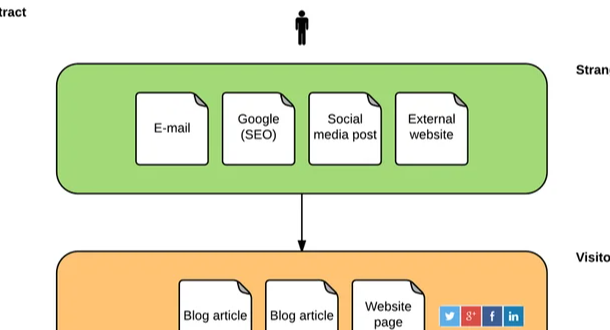Share this
Previous story
← Curate content or create it yourself? [infographic]
Next story
Webs' growth story: dare to choose →
Every goal, whether tactical or strategic in nature, needs preconditions. Preconditions provide a clear framework within which the result to be achieved takes shape. Think about focusing on a specific B2B marketing objective, the time frame in which the goal must be achieved and formulating the end result.
The acronym SMART, familiar to many, first appeared in the November 1981 issue of Management Review, a magazine of training and consulting group the American Management Association (AMA). It is not for nothing that the SMART method has supported us for more than 3 decades in formulating our goals in Specific, Measurable, Acceptable, Realistic and Time-bound terms.
When an objective is formulated SMART, it meets the following conditions:

Specific
Be specifiek by describing how achieving the goal should actually be expressed. Answer the following questions: what exactly are you going to deliver? What do we want to achieve? Who will be involved? Where is it going to happen?
Measurable
Make sure the goal is measurable before, during and after the goal is achieved. To make a goal measurable usually express it in numbers. It can also be made concrete by comparing it to existing reports, studies or procedures. In this case, take the existing document as a benchmark.
Acceptable
There must be support for the goal to be achieved. Are others willing mto cooperate in its realization? Is it consistent with the organization's policies and objectives?
Realistic
Is the goal achievable within the set frameworks? Are the efforts related to the end result? The goal should be challenging but achievable.
Time-bound
When will it happen? When should the goal be accomplished? Name start intermediate dates and an end date. Sub-goals contribute to a good end result.
Yet there are some important points that are not addressed within the method. The biggest risk with SMART goal setting is that you lose sight of bigger picture. Other important elements are left out. Therefore, try answering the following questions.

Is my objective simple?
The SMART method can provide pleasant guidance. With SMART, don't lose yourself in formulating the objective, rather than achieving the objective per se. Not all goals can be formulated SMART, so do not focus on this. Keep in mind that SMART is a means, not an end in itself.
Is my goal legitimate?
Before you know it, a rock-solid goal is on the table after a meeting. We feverishly search for methods to achieve this objective. SMART is the first method that comes to mind. What is not considered, however, is: is this the right objective to set ourselves? Is there a good reason for us as an organization to achieve this goal? So: is the goal legitimate?
Does my objective invite innovation?
Moreover, fixating on the objective can cause one to stop innovating. In other words, people stop thinking about innovative solutions because they are too busy executing the set SMART goals. Is deviating from SMART goals necessarily a bad thing? Sometimes adjustment is necessary.
Is there enough motivation to achieve this goal?
Another criticism: the SMART goals put too much focus on achieving a goal, and the intrinsic motivation to achieve a goal is disregarded. While the emotional aspect to achieving a goal actually determines the success rate. How happy will you and your colleagues be when the goal is achieved?
If you can answer "yes" to all of the above questions, then you have thought about your marketing goals and their conditions. Do you still need to work with SMART objectives? Always take a step back and try to see the goal in the bigger picture. What are we actually doing? Make sure your objective is not only SMART, but also Simple, Legitimate, Innovative and Motivating!
Objectives are an essential part of inbound marketing - a marketing methodology that moves your organization's communications from push to pull. It's good that you're attracting visitors this way, but get clear to yourself what you're doing it for.

Want to get the most out of HubSpot? Subscribe to our newsletter, follow us on LinkedIn, or attend our HubSpot User Days!
Explore HubSpot User DaysThese Related Stories


